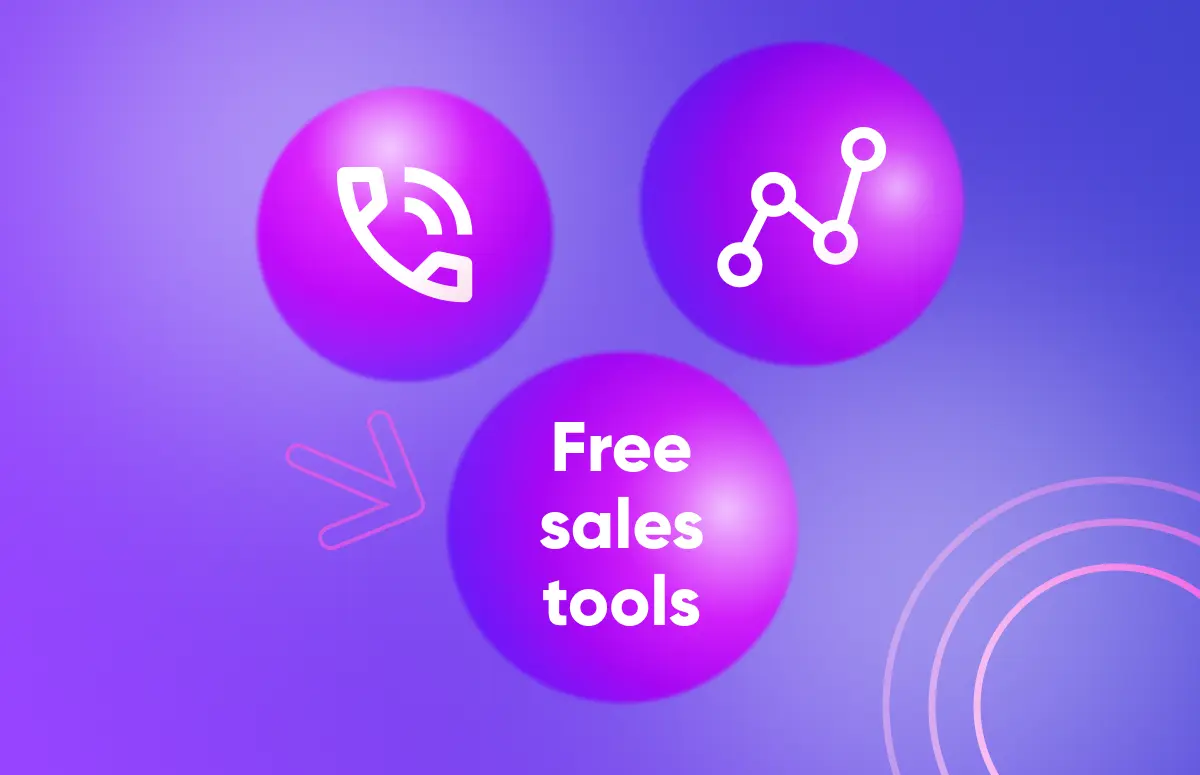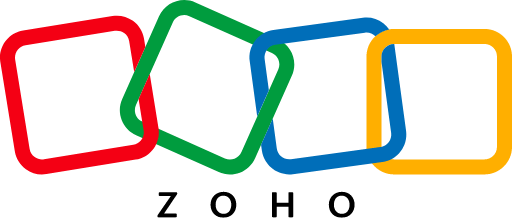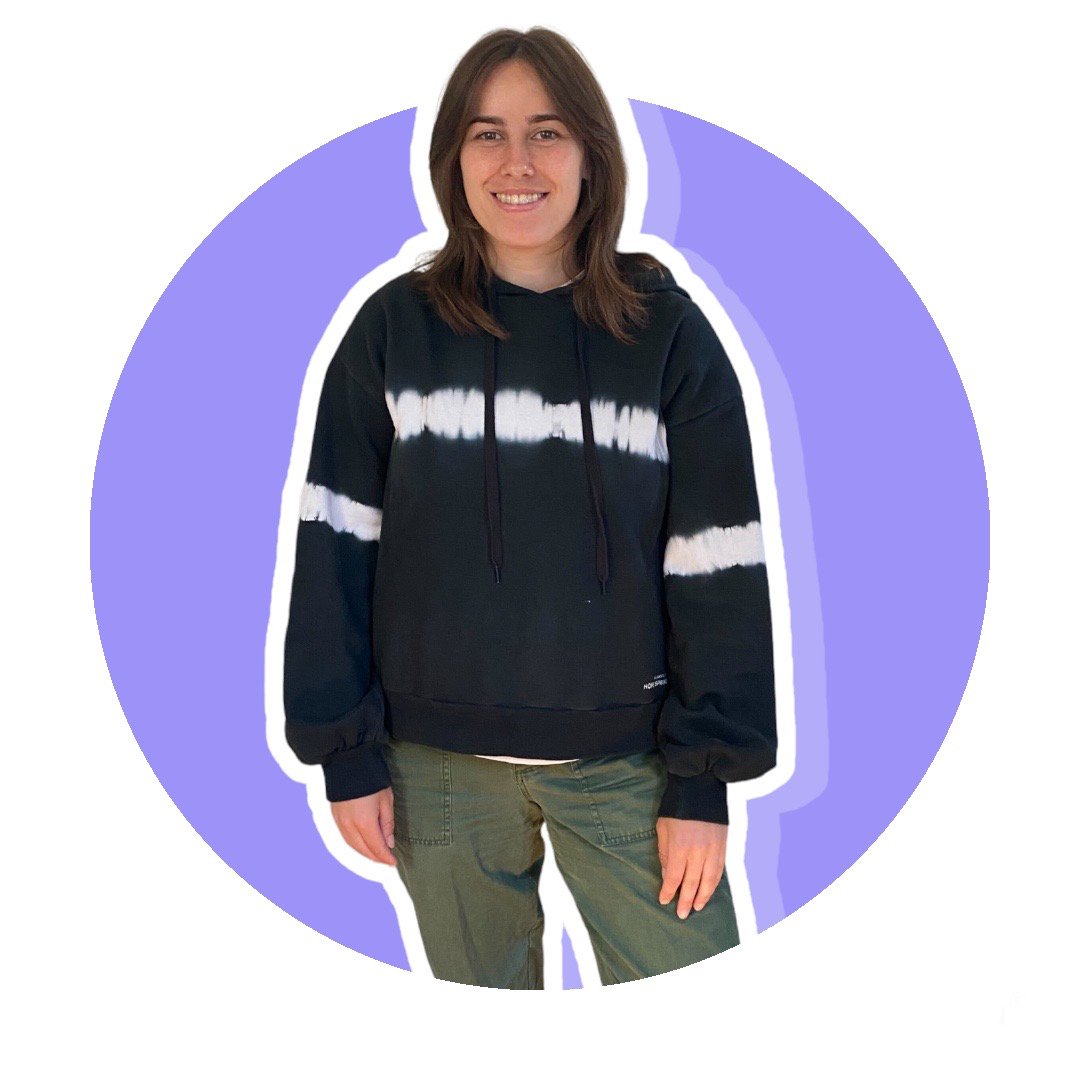
Throwing money at ads and spammy outreach won’t cut it anymore.
Modern SaaS companies face a unique puzzle: They need leads who’ll stay for the long haul, not just window shoppers.
A one-time sale means nothing in the subscription game—your success hinges on finding leads who will become loyal subscribers and brand champions.
While traditional businesses chase quick wins, SaaS companies must play the long game. Your leads aren’t just potential customers but future partners in your growth story. With the global SaaS market growing at a staggering 18.4% annually, the challenge isn’t just attracting leads—but the right ones.
Let’s explore the SaaS lead generation efforts that are winning (and keeping) customers today. 👇
7 SaaS lead generation strategies
A multi-channel approach to SaaS lead generation is essential. Here is what’s getting real-life results.
1. Search engine optimization
We’re going to start here, partly because search engine optimization (SEO) is my favorite subject and because it is genuinely a really valuable lead gen strategy for SaaS. 💯
SEO connects you with people in the market who want to buy right now and those who are thinking about it. Let’s return to the old sales funnel: your SEO means capturing people in the interest right through to the consideration stage. 👇

While ads have you pay for every click, SEO brings in people already looking for what you offer—for free.
Good SEO isn’t just about vanity metrics like organic growth, organic traffic value, and domain rating; it’s about driving conversions. Something that we’ve done both at Kaspr and Cognism to ensure our SEO does this is to focus on BOFU content. This is content that has keywords that target:
- What in-market buyers are searching for.
- A topic that has high business potential.
True authority in SEO comes from creating valuable, human-first content that consistently serves your audience.
This means our SEO strategy includes keywords that are:
- Feature-focused - We can reach users looking for specific capabilities, e.g., LinkedIn Chrome Extension.
- Comparison keywords - To capture people in-market comparing options, e.g. ‘Kaspr vs Lusha’.
- Problem-based keywords - These are for problem-aware people searching for solutions, e.g., ‘get phone number from LinkedIn’.
- Educational content - To help drive awareness and build trust. This post is a great example of educational content: You just learnt about our SEO. 😉
2. Have a content marketing strategy
Content marketing works great in SaaS companies for two main reasons. First, it helps explain complex products in simple terms. Second, it builds trust with buyers earlier in the journey or who aren’t in the market to buy right now.
Unlike SEO content, we’re talking about people at the top of the funnel here. And there’s likely to be loads more of them (check out Chet Holmes’ buyer’s pyramid).

So, how does good content make these people eventually want to buy from you?
Here are my top reasons:
- It creates brand awareness. “Kaspr? Oh yeah, I know them. They run this podcast I listen to called Everything is Sales.”
- You’ll be able to help prospects with other problems before they even buy your solution, which means major trust points.
- You demonstrate your solution’s value before they buy, enabling business cases to be built.
Now, let’s look at some of the key content types:
- Blogs - Helps you get found on Google and educates your audience about topics related to their job role.
- Videos - YouTube is the second largest search engine, and some prefer not to read.
- Case studies - Share real-world success stories and measurable outcomes.
- Podcast/webinars - Sometimes with external guest speakers that interest your buyer persona.
- White papers/reports - Establish authority in certain spaces and capture leads if using the traditional lead gen approach.
So, what’s an example of a SaaS company with great content marketing? I might be biased, but I’ve got to shout out about Cognism here. The Demand Generation team produces amazing content campaigns that resonate with their target audience.
An example is the Diary of a CMO (recently launched volume 2!). The first diary documents the CMO of Cognism Alice de Courcy’s journey as a first-time CMO, scaling the marketing team to hit a revenue target.
As a campaign, the piece of content delivered:
- 7M+ in influenced revenue.
- 11M+ in influenced pipeline.
- 60,000+ page views on the digital version.
- 25,00+ podcast downloads.
3. Social Media marketing
Next, let’s discuss social media platforms. For SaaS, two channels often matter: LinkedIn and Twitter. These are often favored since it’s where most people who make (or are part of) buying decisions hang out.
LinkedIn is like your main stage. It’s where CTOs, managers, and other decision-makers go when they want to lean into their network about buying the next tool. You see plenty of people asking for recommendations.
So, what’s the best way to position your brand on LinkedIn? Well, keeping it value-led helps. To lean back into my own experience, let’s talk about the growth of Kaspr’s company LinkedIn page for a minute. Over the last two years, the channel has been built up from followers in the low thousands to over 10K.
So, how did it get there? Well, the value-led approach has meant that:
- We post valuable information to the buyer persona rather than just promotional content.
- The content is kept on the platform. LinkedIn doesn’t like anything that takes users away from it, so it’s best to use the platform as content in its own right.
- Plenty of videos and working with thought-leaders in the space. Kaspr posts about SDR advice from reps performing well in the role.
💰 If you work in finance, check out this financial advisor lead generation article.
4. Paid Advertising
Paid ads can bring quick wins - if you do them right. 🤑
Let’s break down the two ways SaaS companies use paid advertising to fill their pipeline.
PPC (Google Ads, LinkedIn Ads)
When someone searches Google for “best project management software” or “CRM for startups”, they’re actively looking for solutions. That’s where Google Ads shine. You can catch people right when they need you most. Focus on keywords that show buying intent - phrases like “software comparison,” “pricing,” or “alternatives” often lead to quality clicks.
LinkedIn Ads work differently but pack a punch.
Why?
Because you can target exactly who you want to reach:
- People with specific job titles.
- Decision-makers at companies of certain sizes.
- Folks in industries that need your solution.
Here’s a pro tip: don’t blow your budget trying to reach everyone. Start small, targeting a specific type of customer who really needs what you offer. Once you see what works, scale it up.
For example, take a look at what Cognism does as their demand generation paid campaigns:
- Social media ads on platforms like LinkedIn to educate their audience and build interest in their solution.
- Search ads to catch people already looking for sales intelligence tools.
Their creative campaign #WeAreProspects took a fun approach to B2B advertising. Instead of dry, corporate messaging, they used humor to connect with their audience about common sales prospecting frustrations.
The result? Higher engagement and better brand recognition.
Retargeting
Think of retargeting as your second chance to impress. When someone visits your site but doesn’t convert, you can show them relevant ads across the web.
But be smart about it—if they look at your pricing page, show them a case study. If they read your blog, offer them a free trial.
Remember: good paid ads aren’t about spending more - they’re about spending smarter. Track what works, drop what doesn’t, and always test new ideas.
5. Cold Outreach
Cold outreach isn’t dead - it’s just evolved. Today’s successful cold outreach is less about selling and more about starting meaningful conversations. The first step? Make sure you’re reaching the right people.
Tools like Kaspr help you find accurate contact details for decision-makers. Getting reliable data matters - the best message won’t work if it never reaches your target audience.
/%5BPMM%202%5D%20-%20Boost%20pipeline/LinkedIn%20Chrome%20Extension%20UK%201%20(EN).webp?width=700&height=420&name=LinkedIn%20Chrome%20Extension%20UK%201%20(EN).webp)
Once your contact list is ready, it’s time to focus on crafting messages that actually get responses.
Let’s learn from Cognism’s SDRs about how to make cold outreach feel warm and personal.
💡 The “Typically” approach
Build trust by framing the conversation as a shared experience and use typically.
Try: “Typically, when I speak to [role], they face challenges with [specific issues].”
This shows you understand their world and positions you as knowledgeable about their challenges.
💡 The “Imagine” method
Help prospects visualize concrete benefits:
“Imagine saving 10 hours a week with our software. How would that impact your team’s efficiency?”
This approach turns abstract benefits into tangible outcomes.
💡 Leveraging objections
Instead of avoiding objections, use them to dig deeper:
- When hearing “too expensive”, ask, “What budget range do you have in mind?”
- This keeps the conversation going and helps uncover real pain points.
💡 Using open-ended questions
Keep the conversation flowing with questions like:
- “Could you expand on that point?”.
- “How does this challenge affect your team?”.
These questions help you understand their priorities and tailor your solution to their needs.
6. Freemium model and free trials
Getting potential customers to try your product can be more powerful than any sales pitch. Free trials and freemium models let your product sell itself by giving users hands-on experience with your solution.
So, what’s the difference?
|
Feature |
Free trial |
Freemium |
|
Duration |
Limited time (usually 14-30 days) |
Unlimited |
|
Access level |
Full feature access |
Basic features only |
|
Best for |
Complex, high-value solutions |
Products with clear upgrade paths |
|
Main benefit |
Creates urgency to decide |
Builds large user base over time |
|
Conversion focus |
Quick decision within trial period |
Gradual upgrade as needs grow |
|
Risk level |
Lower (qualified leads only) |
Higher (many free-forever users) |
|
Support Needed |
Intensive during trial |
Ongoing but less intensive |
Once users try your product, turning them into paying customers is key. Here’s what works:
- Show value early - guide users to their first “wow” moment in the first session.
- Focus on key features that solve their biggest problems.
- Send timely tips based on how they’re using the product.
- Reach out personally when you see high engagement.
- Remind them what they’ll lose when the trial ends.
The real success comes when users can’t imagine working without your solution. Focus on making their experience valuable; the upgrade conversation will happen naturally.
7. Referral programs and customer advocacy
Building a SaaS business requires both free and paid marketing. While organic methods build your base, paid ads help you grow faster. Smart companies use ads to reach specific people, like targeting CTOs at mid-size companies or managers looking for specific tools.
Don’t forget about people who’ve already visited your site. Retargeting ads remind them about your product when they browse elsewhere. LinkedIn works great for reaching business decision-makers, while Google Ads catch people actively searching for solutions.
Want more quality leads?
Get your happy customers to help. Offer them perks like service credits or special features to refer others. Their word carries more weight than any ad.
The secret sauce?
Mix paid ads with customer referrals. This combo helps you grow faster while keeping lead quality high.
What makes SaaS lead generation different?
Picture a traditional retail store: customers walk in, make a purchase, and that’s often the end of the story.
SaaS lead generation flips this model on its head. Instead of chasing single transactions, SaaS companies must build a foundation for ongoing relationships. This isn’t just about getting someone to click “buy”—it’s about finding prospects who align with your product’s long-term value.
Here’s what sets B2B SaaS lead generation apart:
- Focus on recurring revenue (ARR to me and you)—In SaaS, the goal isn’t just an initial sale. The best leads are those who renew their subscriptions, upgrade plans, and become loyal advocates for your brand.
- Complex decision-making—SaaS purchases sometimes involve multiple decision-makers, from end-users to executives. Your strategy needs to address the needs of everyone involved in the buying process.
- Educating before selling—SaaS products solve complicated problems. Lead generation should focus on educating prospects and showing them how your solution addresses their specific challenges.
- Prove value over time—Retention is everything in SaaS. From the start, set clear expectations and emphasize the ongoing benefits of your product to build trust and keep customers engaged.
This approach isn’t about transactions—it’s about fostering lasting relationships.
Lead nurturing for SaaS: converting leads to customers
Only some leads are ready to buy right away. Smart SaaS companies know that nurturing leads with the right content at the right time turns browsers into buyers. The key? Making each touchpoint count.
Email drip campaigns
Drip campaigns are automated sequences of pre-written emails sent over time, helping to educate and guide leads based on their behavior and stage in the buyer’s journey. For example:
- Personalized triggers. Set up triggers like webinar sign-ups or eBook downloads to initiate relevant email sequences. For example, a lead downloading a product guide might receive follow-up emails discussing specific use cases.
- Content mix. Incorporate educational resources, case studies, and product demos to address pain points and showcase value.
Drip campaigns can progress leads naturally without overwhelming them.
Personalized outreach
Personalization boosts engagement and fosters trust. Successful cold outreach strategies emphasize relevance:
- Role-specific messaging. Tailor messages to prospects’ roles. For example, highlight cost-saving benefits for CFOs or operational efficiency for managers.
- Dynamic content. CRM data enrichment tools deliver content aligned with individual preferences, such as providing tailored solutions based on prior interactions.
Example: A prospect expressing frustration about lead generation inefficiency on LinkedIn could be contacted with a proposal supporting a relevant case study.
Follow-up schedules
A well-paced follow-up schedule (sales cadence) keeps leads engaged without feeling pressured:
- Timely check-ins. Start with two emails in the first week, then adjust to weekly. Experiment with send times tailored to industries—early mornings for sales and afternoons for marketing
- Re-engagement strategies. Use inactivity triggers (e.g., no website visits for months) to send reminders or value-driven offers, rekindling interest in dormant leads.
Top tools for SaaS lead generation
Lead generation tools are essential for SaaS companies to identify, engage, and convert prospects efficiently. Here are three top tools tailored for SaaS lead generation:
Kaspr
Kaspr is a LinkedIn automation tool that provides verified email addresses and phone numbers. Its integration with LinkedIn makes it invaluable for prospecting, especially in B2B contexts. SaaS teams can quickly enrich contact details, enabling seamless outreach and follow-ups.
/%5BPMM%204%5D%20-%20Kaspr%20fits%20seamlessly%20into%20your%20tech%20stack/Workflow%20enrichment%201%20(EN).webp?width=700&height=350&name=Workflow%20enrichment%201%20(EN).webp)
Cognism
Cognism excels in advanced B2B lead generation with a vast global database. Its features include technographic filters and intent data, helping SaaS companies target leads already researching similar solutions. Real-time data accuracy ensures outreach relevance, improving conversions.

LinkedIn Sales Navigator
Ideal for targeting professionals, Sales Navigator offers advanced search filters, lead recommendations, and activity tracking. SaaS businesses can identify decision-makers, track engagement, and use InMail for personalized outreach.

Conclusion
Growing a SaaS business isn’t about picking one perfect way to generate leads—it’s about using several methods that work together.
Think of it like this: your content and SEO bring in people looking for solutions, while paid ads help you reach buyers faster. Social media and cold outreach let you talk directly to decision-makers. And when people show interest, free trials let them test your product themselves.
You’ve got helpful tools like Kaspr to find prospects and Cognism to learn more about them. But don’t try to use everything at once. Start small with what makes sense for your business. See what works, then do more of that.
The key is to stay focused on turning interested visitors into happy, paying customers. When you find something that works, double down on it. 💯
Accurate European contact data
Get accurate data for your prospects and connect with your favorite sales tool







![15 Best Sales Cadence Software For 2025 [Compared]-festured-image](https://6052405.fs1.hubspotusercontent-na1.net/hubfs/6052405/2023%20-%20Blog/EN%20SEO%20blogs%20%28Clusters%29%20%5B%2B%20FR%2c%20ES%20and%20DE%20variations%5D/Outbound%20sales%20%28cluster%29/Sales%20cadence%20software/EN_sales-cadence-software-card.png)
